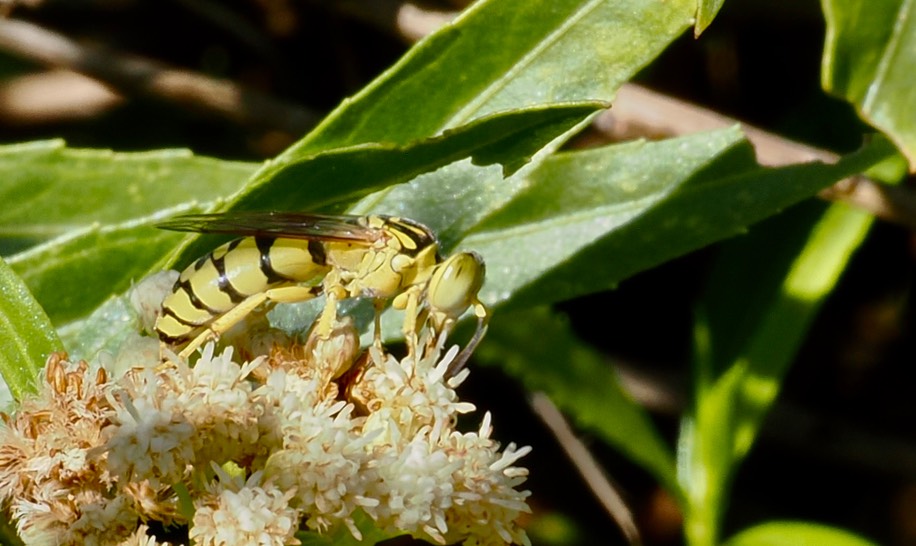On September 7 of this year I was in Warm Springs Wash, northeast of Hillsboro. I was there to photograph and video what we commonly call Tarantula Wasps. Those things with fascinating, and relatively common, natural history involving paralizing spiders and laying eggs on them.
The obvious place to look was in the Seepwillow (a.k.a. Multe Fat), Baccharis salicifolia, which grows in the wash - especially at the northern end near the springs.
Most of the Seepwillow seemed to be devoid of any insect activity but I found a few plants which were swarming with bees, wasps, and butterflies. On some flower clusters I found as many as four species of wasp/bee and two species of butterfly. They were continually bumping into each other - in a very non-aggressive manner.
Trying to determine the species of the bees and wasps has turned out to be very difficult. Not only because of my lack of expertise and capability but also because there are hundreds of species to consider.

The Stictiella pulchella pictured above was one of the wasps I encountered. I do not collect specimens (and would not know what to do with them if I did) so I am reduced to image matching in my identification efforts. To arrive at a finding of Stictiella pulchella I looked at over 814 pages of images, most pages having scores of photographs, in BugGuide - after determining that it was probably in the family Crabronidae. The folks at BugGuide concur, at this point, that the individual shown above is in the subtribe Stictiellina which includes the genus Stictiella.
What’s Next: I am working on an article about the critters I find on Seepwillow (seemed like a thing). It will include this little Butterfly-wolf Wasp (doesn’t that name cause you to salivate in anticipation) as well as Scoliid Wasps and some butterflies. The article will either be in the July 2026, or maybe the October, issue of the Black Range Naturalist.